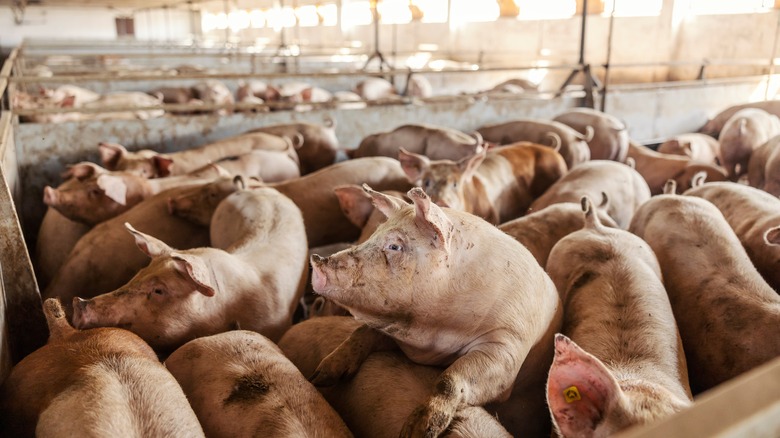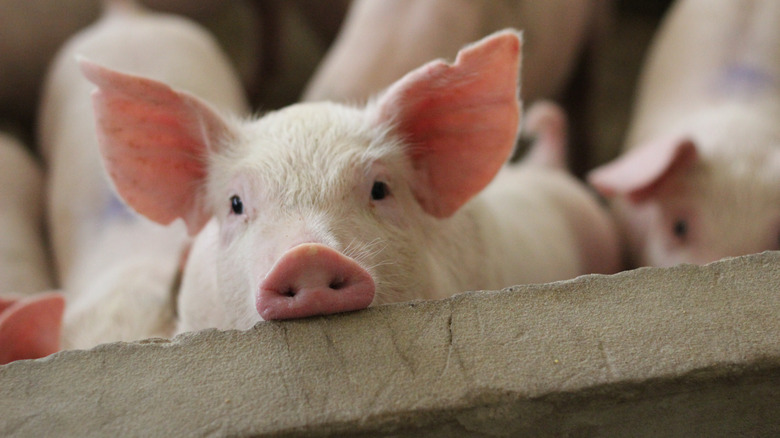The Reason China Is Now Feeling The Threat Of Food Inflation
One of the major global impacts of Russia's invasion of Ukraine has been the global wheat shortage. The disruption of such a basic crop contributed to rising food prices seen all over the globe. And, while China has appeared to be in better in better shape than a lot of countries in recent months, they have since started to feel some of their pain.
According to Bloomberg, the Chinese government has announced that it will be looking into the possibility of selling its reserve pork supplies. As the outlet explained, the organization believes that if more pork floods the market, the price for pork will not rise so quickly.
Part of the reason behind the inflationary pressure is due to the invasion. According to a March 2022 report from Reuters, the disrupted grain supply further rose already expensive grain prices in March. This means that pork has to sell for more, otherwise farmers will not be able to afford to raise their pigs. At the time of the report, the price for pork was only half of what it was in March 2021.
Historically, the hog market in China goes through boom and bust cycles every three to four years (via Bloomberg). But with added pressure on basic supplies to feed the pigs, the cycle is felt more severely.
The aftershock of African swine fever
While the invasion of Ukraine is a reason for the rising cost of the Chinese staple, it is not the only factor. As Bloomberg mentioned, there is a historical cycle. The previous cycle that covers 2018 to 2022, however, was radically more severe than any that went before it.
The reason for the extreme swing was the African swine fever pandemic in 2018 and 2019. In January of 2020, ABC reported that Chinese authorities had culled 1.2 million pigs since the start of the pandemic's spread while farmers stopped raising the pigs. CNBC said that the country had to cull 40% of its herd. This resulted in pork prices rising by 97%, food prices in general to rise by 17.4%, and overall inflation to rise by 4.5%, via ABC. So, in addition to the grain prices skyrocketing, the Chinese pork market was already reeling from a catastrophic swing.
Since the pandemic, however, it could be argued that these spikes are more dangerous as companies were lured into investing heavily in pork during the shortage of 2019. As CNBC learned, this caused the biggest pork producers to nearly triple their gross debt. At the time, it seemed like a bad bet as prices plummeted almost as fast as they rose. But with the pressure of general inflation, companies may want to make good on their investment.

